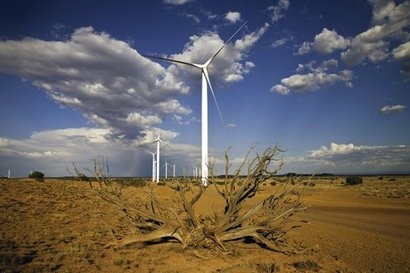
The low cost and reliability of wind power continued to drive strong industry growth across the US in the third quarter according to the AWEA report. Seven states now have enough wind projects under construction or in advanced stages of development to more than double their capacity to generate electricity from the wind when they are completed. The heartland states of Arkansas, Nebraska, New Mexico, South Dakota and Wyoming all have onshore wind projects under development, while the coastal states of Maryland and Massachusetts are poised to scale up various offshore wind projects.
The report also reveals the first firm orders for 4 MW onshore wind turbines, nearly twice as powerful as the average wind turbine installed in 2017.
“The wind is always blowing in the US and the latest wind turbine technology helps affordably and reliably put more of that natural resource to work” said Tom Kiernan, CEO of AWEA. “With projects underway in over 30 states, wind is rapidly expanding as a major source of American energy, good jobs and clean air.”
As the industry expands, wind turbines are growing much more powerful and efficient at delivering low-cost, clean energy to American homes and businesses. Longer blades help turbines capture more of the wind resource blowing past and new wind farms utilise big data and machine learning to improve power output and reduce downtime by anticipating maintenance problems before they arise. These advances drive down costs and translate into major efficiency gains.
The average utility-scale wind turbine installed in 2017 was rated at 2.32 MW, enough to power over 750 American homes for a full year. More powerful wind turbines are on the horizon. In the third quarter, new orders for wind turbines include land-based turbines above 4 MW for the first time, which are capable of powering 1,400 homes a year.
Currently, only two operating onshore wind farms use turbines rated above 3.5 MW. This will soon change as the industry embraces the new technology. There are currently 12 more projects in development that are planning to use turbines rated above 3.5 MW. Offshore wind turbines are typically rated above 6 MW.
US wind farms now represent a total of 90,550 MW of electricity generating capacity, with 612 MW installed in the third quarter of 2018. That’s enough wind power capacity to power 27 million average US homes, with more than 54,000 wind turbines operating in 41 states plus Guam and Puerto Rico.
There is a strong near-term wind farm pipeline comprised of 37,965 MW of wind power capacity. These wind farms are either actively under construction or have entered advanced stages of development through a major milestone such as placing a turbine order or finding a buyer for their power. During the third quarter, projects totalling 2,180 MW started construction and a further 2,327 MW entered advanced development.
Wind power’s low and stable prices continued to drive strong demand from utilities and corporate customers in the third quarter. Over the last several years, non-utility customers including major consumer brands, cities, universities and the US military have become a major source of demand for wind power.
Utilities signed contracts for 1,522 MW of wind capacity in the third quarter, including the largest procurement of US offshore wind to-date from the 800 MW Vineyard Wind project by Eversource Energy, National Grid, and Unitil.
For additional information:

